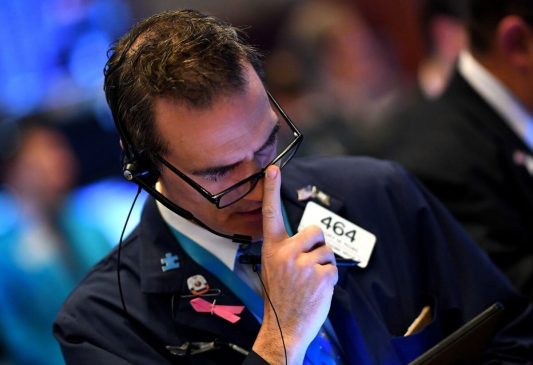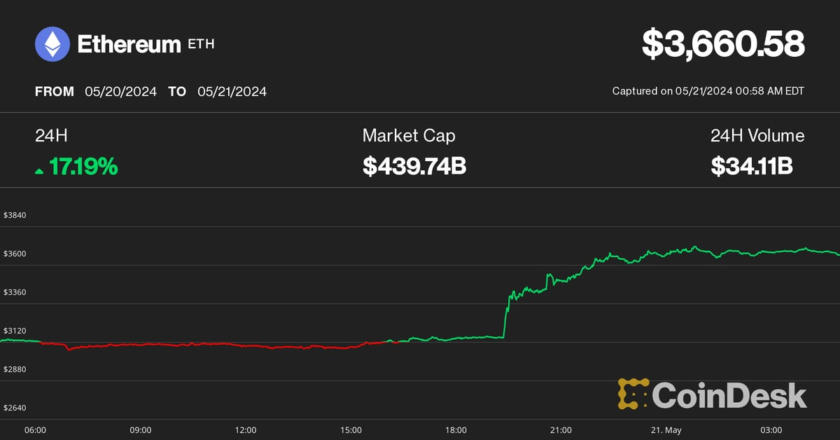- Dow Jones Industrial Average (DJIA) futures point to a stock market open near all-time highs.
- Traders are seemingly ignoring the Federal Reserve’s own recession indicator as the yield curve inverts again.
- Fed chairman Jerome Powell is expected to “sound upbeat” in a testimony today.
The S&P 500 and Nasdaq topped out at record highs in yesterday’s session, and the Dow Jones might follow suit today. DJIA futures shot higher on Tuesday pointing to an open just shy of all-time highs.
Despite the record figures, there’s a silent alarm going off: the dreaded yield curve inversion. The Federal Reserve uses this indicator to calculate the probability of a recession. And right now it’s flashing red, putting the chance of recession this year at 37%.
Historically, this indicator has preceded every major recession. The timing couldn’t be worse for the Federal Reserve whose chairman Jerome Powell is expected to testify before the House Financial Services Committee today.
Dow futures jump near record highs
Following a strong day on the stock market yesterday, Dow futures are edging towards a record high.
S&P 500 futures and Nasdaq Composite futures were up 0.22% and 0.35% respectively.
The bond market yield curve inverts… again
The yield curve inversion happens when long-term bonds give out less than short-term bonds. In this case, the ten-year US Treasury bond yields less than the three-month. The yield curve inverted between May and September last year, and flipped negative again in late January 2020.
Why is this a big deal? The indicator is used to predict a recession because it signals a flight to ‘safe’ assets and investor pessimism about the long-term economy.
In a grab for safety and duration, everyone is going for U.S. Treasuries – Gregory Faranello, AmeriVet Securities in New York
The Federal Reserve tracks this inversion closely. Based on the current spread, it calculates a 37% probability of a recession in July this year.
Is a Dow Jones crash imminent?
Maybe not. The indicator has been historically accurate in predicting stock market corrections, but it doesn’t do a good job of predicting when the reversal comes.
In fact, there may be no reversal at all. As you can see in the chart below, traders have completely brushed it off this time around. In 2000 and 2007, the yield curve inversion was quickly followed by a stock market crash. This time? It just keeps pushing higher.
Analysts have pointed to the fact that the US economy is fundamentally strong. And the inversion may say more about weakness abroad rather than recession panic at home.
The yield curve inversion is a signal now of global growth issues, and not really reflecting what is going on in the U.S. – Faranello.
Federal Reserve Jerome Powell testifies before the House
The yield curve inversion might be on Powell’s mind as he heads to Capitol Hill today. The Fed chairman will deliver a testimony before the House Financial Services Committee where he’s likely to be grilled about the impact of the coronavirus.
Reuters reports that Powell is expected to deliver an “upbeat” testimony. But traders aren’t so sure. Those nerves are playing out on the futures market where traders are pricing in a 37% chance of a rate cut in July. That figure rises to 68% for September.
In other words, the Fed may be forced to cut rates to support the economy if the virus doesn’t slow down.
This article was edited by Samburaj Das.




